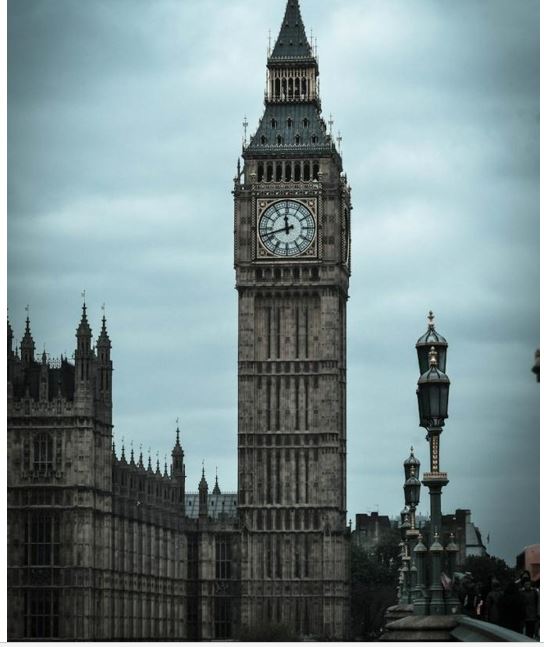NOSTALGIA: THE MAGIC TIME MACHINE
Nostalgia, my friends, is like a magical time machine that transports us back to the good old days. It’s that warm, fuzzy feeling that washes over you when you hear the theme song of a show you used to watch religiously as a kid. It’s like reconnecting with an old friend you haven’t seen in ages. Nostalgia can be triggered by a scent, a piece of music, or even a familiar setting, but in the realm of television, it often revolves around beloved series.
So, why do TV series revivals bank so heavily on nostalgia? The answer, my dear readers, lies in the power of our shared memories.
THE REVIVAL RENAISSANCE
In recent years, the entertainment industry has seen a revival renaissance. Iconic shows that graced our screens decades ago are making a comeback, much to the delight of their die-hard fans. Whether it’s “Friends,” “The X-Files,” or “Gilmore Girls,” these revivals aim to rekindle the magic that once made these shows our absolute favourites. And the primary tool they use to achieve this is, you guessed it, nostalgia.
One of the most notable series revivals in recent memory is “Twin Peaks.” Created by the legendary David Lynch, the original series was a mesmerizing blend of mystery, surrealism, and dark humour. When “Twin Peaks: The Return” hit screens in 2017, fans rejoiced at the opportunity to dive back into this enigmatic world. The revival brought back beloved characters and themes, igniting nostalgia for the original series and attracting a new generation of viewers.
THE EMOTIONAL TUG OF NOSTALGIA
Nostalgia operates on a deep emotional level. When we revisit a TV show we loved in our younger years, it’s not just about reliving the story; it’s about reconnecting with the people we used to be. It’s a way to recapture the essence of our past, and that’s what makes it so powerful.
Take, for instance, the revival of “Full House,” aptly named “Fuller House.” This sitcom, which originally aired from 1987 to 1995, was a staple for many ’90s kids. When “Fuller House” made its debut in 2016, it provided fans with a chance to see the Tanner family all grown up and navigating life’s new challenges. Nostalgia was the driving force behind this revival. Fans wanted to see what had become of the characters they had grown up with, and they eagerly tuned in to find out.
CONNECTING GENERATIONS

Nostalgia in TV series revivals serves as a bridge between generations. It’s not uncommon for parents to introduce their children to the shows they once adored. This intergenerational connection is both heartwarming and a testament to the enduring appeal of these series.
The revival of “Doctor Who” is a prime example of this intergenerational connection. The original series ran from 1963 to 1989, with a TV movie in 1996. When the series was revived in 2005, it breathed new life into the Doctor’s adventures. Whovians of all ages rejoiced as they shared the beloved show with their kids, ensuring that the Doctor’s legacy continues to inspire new generations.
A SENSE OF COMFORT AND FAMILIARITY
In an ever-changing world, nostalgia offers a sense of comfort and familiarity. It’s like wrapping yourself in a cosy blanket on a cold winter’s night. When you dive back into a series you loved, it’s like returning to a place where you feel at home.
Let’s talk about the revival of “The Twilight Zone.” The original series, created by Rod Serling, first aired in the late 1950s. It was a groundbreaking show, known for its thought-provoking and often chilling stories. In 2019, Jordan Peele took the helm as the host and executive producer for the revival. Fans of the original series found solace in the fact that the new version retained the essence of the classic, with a modern twist. The nostalgia factor, combined with Peele’s unique touch, made for a winning combination.
THE PITFALLS OF NOSTALGIA
While nostalgia can be a powerful tool in TV series revivals, it’s not without its pitfalls. There’s a fine line to tread, and sometimes, the nostalgia factor can overshadow the need for fresh, innovative storytelling.
Let’s take a look at “Arrested Development.” This critically acclaimed series returned with new episodes on Netflix in 2013, seven years after its initial run. While fans were initially excited to see the Bluth family back in action, some argued that the revival relied too heavily on callbacks and running gags from the original series. The challenge for TV showrunners is to strike a balance between satisfying the nostalgia of long-time fans and providing something new and engaging for a broader audience.
NOSTALGIA VS. NOSTALGIA-BAITING

One of the key questions surrounding TV series revivals is whether they are genuinely nostalgic or merely nostalgia-baiting. The difference lies in the intent and execution.
“Gilmore Girls: A Year in the Life,” which arrived on Netflix in 2016, is often cited as an example of a successful revival. It picked up the story almost a decade after the original series ended and delved into the lives of its beloved characters. The revival was a true nostalgia trip for fans, providing a sense of closure and an opportunity to see where the characters ended up.
On the other hand, there’s “Roseanne.” The revival of this beloved sitcom generated significant buzz but became mired in controversy. The decision to bring back the character of Roseanne Conner, despite the actress’s past behaviour, left many fans feeling that the revival was more about capitalizing on nostalgia than delivering a meaningful continuation of the story. It ultimately resulted in the show being rebranded as “The Conners.”
THE EVOLUTION OF STORYTELLING
Nostalgia isn’t just about revisiting old stories; it’s also about seeing them through a new lens. The way we consume and engage with TV has evolved, and revivals must adapt to these changes.
“Battlestar Galactica” provides a fascinating example. The original series, which aired in the late 1970s, had its fair share of fans, but it was the 2004 revival that truly made waves. The reimagined series tackled complex themes and provided a grittier, more realistic portrayal of the universe. It wasn’t just about nostalgic callbacks; it was a reimagining that resonated with both old and new fans.
NEW LIFE FOR OLD CHARACTERS
One of the most exciting aspects of TV series revivals is the chance to see how beloved characters have evolved. It’s like catching up with old friends and discovering where life has taken them.
Consider “Will & Grace,” which returned to the small screen in 2017. The revival picked up with the characters years after the original series concluded, and it didn’t shy away from addressing the changes in society and the characters themselves. This added layer of realism, coupled with the nostalgic joy of seeing Will, Grace, Jack, and Karen again, contributed to the revival’s success.
CONCLUSION: NOSTALGIA’S ENDURING ALLURE
In the ever-shifting landscape of television, nostalgia remains a constant force. TV series revivals leverage our shared memories to create a connection that transcends time. Whether it’s the quirky inhabitants of Stars Hollow or the mysterious occurrences in the town of Twin Peaks, these revivals allow us to revisit the past while embracing the present.
As we continue to see classic series dusted off and brought back to life, the key lies in striking a balance. Nostalgia should enhance the storytelling, not overshadow it. The best TV series revivals manage to capture the essence of what made the originals great while offering something new for both dedicated fans and a fresh audience.
So, fellow TV enthusiasts, as we eagerly await the next wave of revivals, let’s embrace the nostalgia, savour the familiar moments, and relish in the joy of seeing our favourite characters once again grace our screens. After all, in the world of television, some things never go out of style.
Moreover, if you’re keen on immersing your audience in the nostalgia of classic movies and TV shows on your YouTube channel, delve into Subscriberz’s offerings. With their tailored solutions, you can expand your reach and connect with countless cinephiles.

